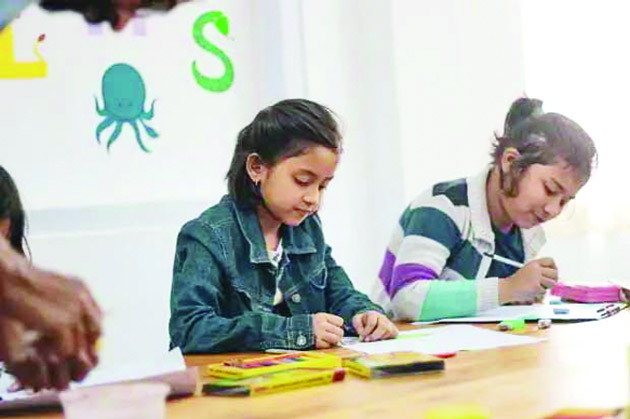Wg Cdr Mahesh Chander Sudan (Retd)
We, the people of Jammu and Kashmir, have been exposed to various political experiments in the recent years primarily due to ongoing security issues across the territorial jurisdiction of the then state of J&K involving stakeholders across the international borders. It has not only affected the security of the people of the state but collaterally hurt various other sectors of growth and development including education. Education is a very critical value addition aspect of social growth that has direct bearing on the society at large and in specific to each and every person. The state of Jammu and Kashmir followed five tier model of Education which includes primary, middle, higher secondary schools, colleges and Universities and the system primarily depended on Government run education institutions across the Urban and Rural areas. Uncertainty emerging out of sponsored terrorism across the state of J&K uprooted the education sector more seriously in rural areas causing disturbance for primary, middle and higher secondary level of education for almost two decades. However, the system is regaining back to normalcy with due diligence and active participation of the concerned teachers, principals, administrative staff both at tehsil, district and UT levels but the damage suffered so long would require consistent efforts on the part of all concerned. Literacy rate has also started showing upward trend and reached 67.16 percent as per latest population census whereas national literacy rate as per NSO (National Statistical Office) is 77.70 percent.
The five tier model of education followed by JKUT is implemented through a total of 28700 schools that includes 23173 Government run schools as per latest survey document. It evidently shows that around 81 percent share of school infrastructure is held and managed by the Government of the Union Territory. Interestingly, the share of students with Government managed school is around 14.73 lakhs and around 12.35 Lakhs with private sector schools that shows only 54 percent workload of education sector in Union Territory is shared by public sector and remaining 46 percent workload goes to private sector. As regards the gross number of teachers, it is seen that around 1.66 Lakh teachers run the entire sector with around 98 thousand Government teachers and remaining strength for private sector, which means 59 percent strength of teachers undertake 54 percent workload and 41 percent private teachers share 46 percent workload of the sector. The drop rate has accelerated in the recent years that compelled education department to undertake mega enrolment drives but the situation continues to be gloomy as the movement to private sector besides helpless dropouts is also on the rise. What ails the education sector in Jammu and Kashmir, is it lack of infrastructure, is it outdated teaching infra, is it lagging behind to cope with new methodology, inadequate training, demoralization of teaching and non-teaching staff owing to stagnation or is it lack of will and involvement of the responsible officials at helm of affairs?
On physical interaction with teachers and real time visit to schools both in Urban and Rural areas it is understood that the location of the Government school makes a difference. There are few counted locations where the strength of the students is noticeable as compared to others where even the number of students is less than the teachers, however it is also a fact that the average strength of students per Government school works out to 64. At the same time, the average strength of students in private schools runs into thousands and the involved commercial angle encourages private sector to flourish day in and day out. Most noticeable feature that attracts parents to take hard financial decision to opt for private sector schools is the ambiance created in terms of buildings, furniture, latest smart class room environment and professional approach of teachers indoctrinated in the system with required aptness. No doubt, the Government school teaching staff is well educated, trained and experienced but the noticeable gaps in terms of accountability and auditability needs serious professional approach on the part of Principals, regional heads, cluster heads, district and the UT level officials both in teaching and non-teaching departments.
In the present age, it is more essential to keep pace with teaching methodology with due aptness, indent requisite training for teachers, plan against stagnation in the growth of human resource, to maintain due dignity and morale of the teachers to make teaching and learning an interactive process, periodical review of course content to make it easily digestible for students and teachers, hold regular introspective but informal interaction with teachers and students at school level, a strong feedback system between parent-teachers at frequent intervals rather than at the end of half-yearly or yearly sessions and above all to create a sense of professionalism amongst teaching and non-teaching staff for attaining a well-coordinated mechanism so that chances of visible gaps in the process are minimized.
It may be in the right earnest to acknowledge the services of private players in the education sector of JKUT for achieving better overall literacy rate for empowering future generations with best education at affordable price and in a well-coordinated and controlled manner so that unhealthy and undesired competition is not allowed to disturb the system. However, it is imperative for Education Department of JKUT to introspect, inspect and introduce more realistic methods to make Government schools attractive both in terms of infrastructure and instructions for achieving economic and utmost utilization of meagre public resources.
Jai Hind, Jai Bharat.
Trending Now
E-Paper


